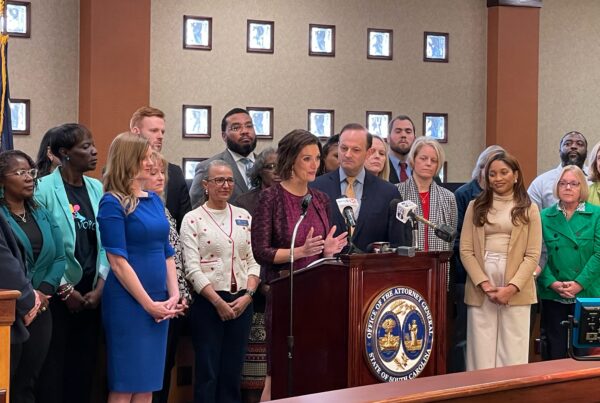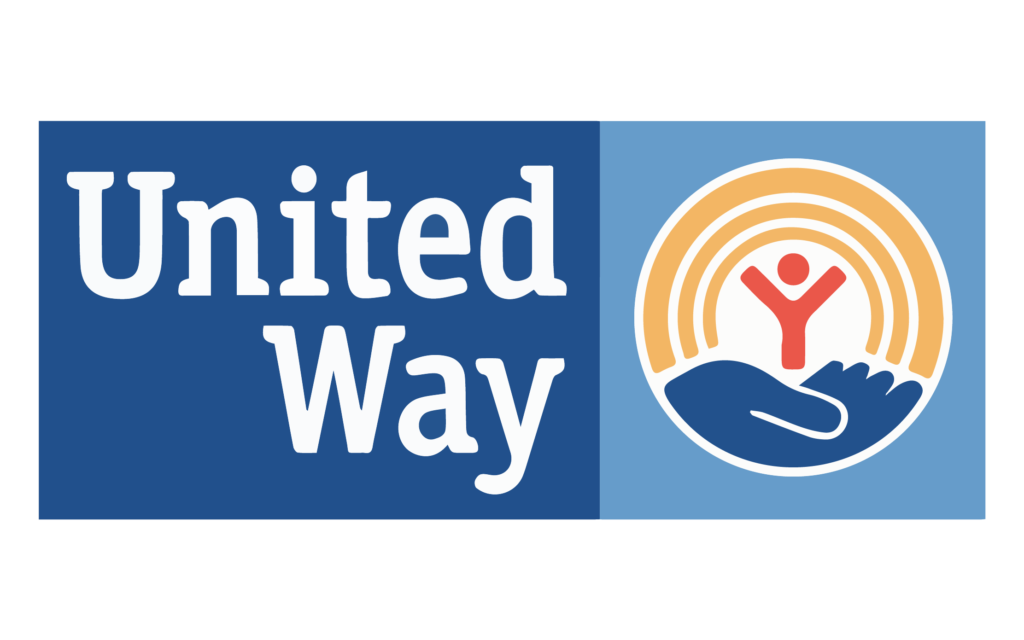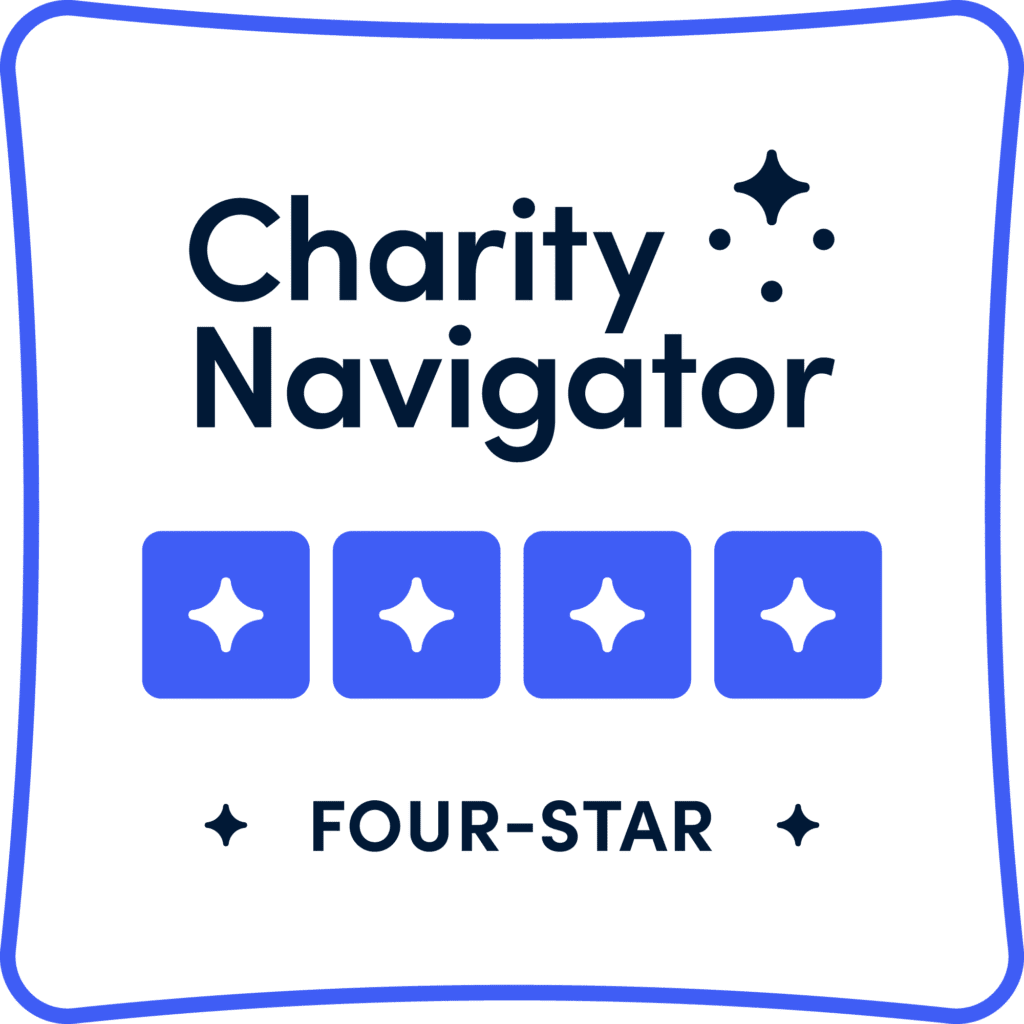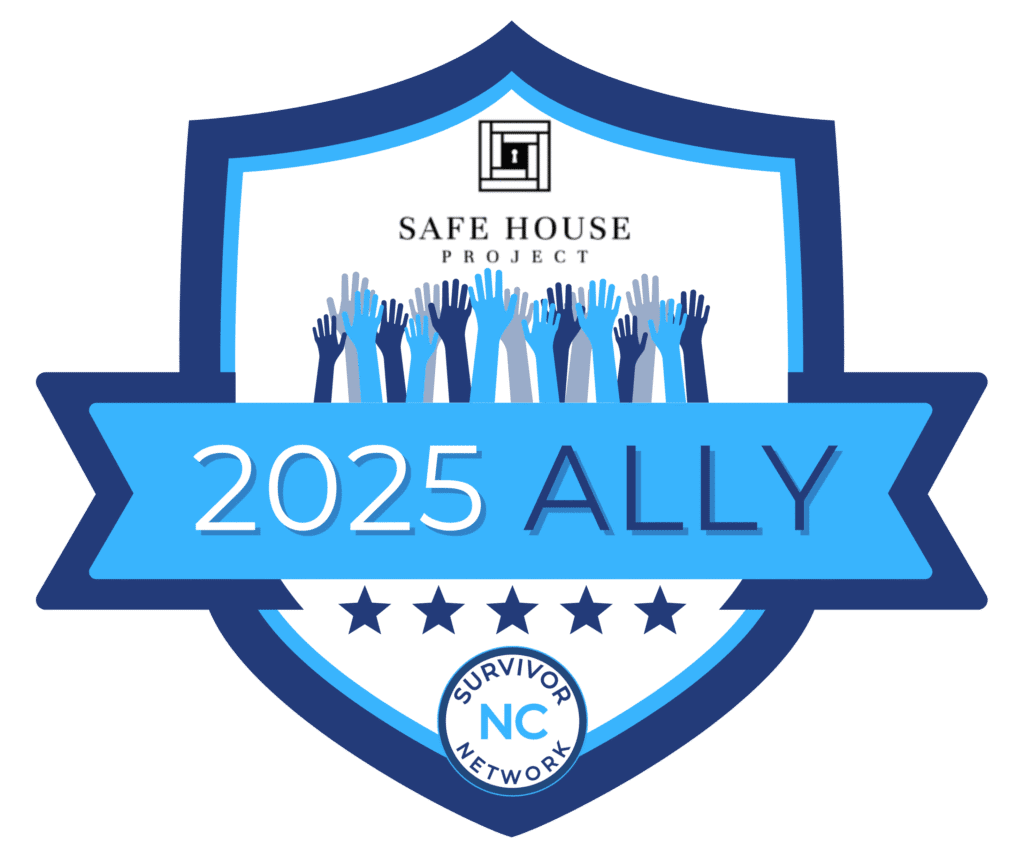At Safe House Project, our mission goes beyond escape; it’s about restoration, freedom, hope, and empowerment. In the fight to end trafficking in America, these values aren’t just guiding principles; they’re a lifeline.
But one thing remains clear: no organization can end trafficking alone.
That’s why we are proud to partner with communities and organizations like TraknProtect that share a collective mission.
Together, we’re reimagining what it looks like to collaborate for impact, harness innovation for good, and build a future where every survivor has access to safe housing and a pathway to freedom and healing.
A Collective Mission, A Unified Force
Human trafficking is a crisis that affects every community yet hides in plain sight. It’s complex, global, and deeply personal. Solving it requires more than awareness; it demands action across sectors, guided by shared values and a relentless pursuit of change.
We sat down with our Co-Founder and COO, Brittany Dunn, and TraknProtect CEO, Parminder Batra, to discuss the importance of these partnerships in the fight against human trafficking.
Q: This partnership is a powerful example of how innovation and advocacy can come together for impact. What does true collaboration look like to you, and how can more businesses – regardless of size – step into this space meaningfully?
Brittany: The partnership between Safe House Project and TraknProtect shows what can happen when purpose-driven organizations unite around a shared mission. Our organizations connected at the AHLA Safety & Security Summit back in 2018. Since then, our collaboration has demonstrated that meaningful change occurs when innovation meets unwavering commitment to human dignity.
Parminder’s dedication to leveraging her business as a force for lasting change has been instrumental in advancing our shared vision. Her approach to integrating anti-trafficking solutions into hospitality operations shows how business leaders can embed social responsibility into their core operations, not as an afterthought, but as a fundamental principle.
True collaboration transcends transactional partnerships. It requires vulnerability, shared accountability, and a willingness to challenge existing systems. Our work together has involved honest conversations about industry blind spots. We’ve had joint problem-solving sessions that bridge technology and human-centered approaches.
For businesses of any size looking to engage in this space meaningfully, the entry point isn’t about having massive resources; it’s about having genuine commitment. You must commit to measuring impact beyond profit margins. Even more, you have to be willing to fail forward together and learn from frontline experiences in order to refine your strategies.
This work requires all of us to move beyond corporate social responsibility initiatives toward what I call “collective impact,” where fighting trafficking becomes woven into how we do business, not just something we do alongside business.
Parminder: When I met Brittany in 2018, we were a leading provider of safety solution in hotels in Chicago. And during one of my trips to Las Vegas, my phone rang in the middle of the night and I heard a young, scared voice asking how she could get an outside line. It was then I suspected that the person calling me may be a human trafficking survivor looking to call someone for help. I felt frustrated and helpless when I couldn’t get the security of the hotel to locate her room and provide assistance. It was serendipitous that when I flew out to DC a couple of days later, our display table was next to the Safe House Project table, and I connected with Brittany. In that moment, I realized there was so much we could do, for taking the training, bringing awareness to our customers, partners and vendors and creating ripple effects of knowledge.
Seven years later, we are now collaborating with the Safe House Project team to bring other partners to the table to collaborate on a technical solution that will help detect and prevent human trafficking in hotels as it is happening in the hotel rather than after the fact when hotels are unable to do anything. Finding out something happened in the room after the fact doesn’t help solve the problem but being able to address it as the trafficker checks into the hotel, or while they may be engaging in trafficking at the hotel, that can have a massive impact on helping survivors.
In collaborating, each party doesn’t need to have all the answers, but you have to be willing to learn, to contribute and to think outside the box as to what can be brought to the table to facilitate a solution towards a common goal.
Q: In a world where corporate social responsibility often becomes a checkbox, how can we redefine success to include measurable impact in causes like human trafficking prevention?
Brittany: Redefining success requires fundamentally shifting from performative metrics to outcome-based accountability. Traditional CSR measurements like dollars donated or hours volunteered really tell us nothing about whether vulnerable individuals are actually safer.
Measuring true impact in human trafficking prevention means tracking concrete indicators:
- How many potential victims were identified through your training programs
- How many supply chain partners implemented new screening protocols or
- How many community members can now recognize warning signs.
This all-demands transparency about your failures alongside your successes, longitudinal tracking of initiatives beyond quarterly reports, and collaboration with organizations that can validate whether your efforts are creating real change rather than just good optics.
Parminder: The checkbox problem is real – we see corporations say they support causes and organizations through measuring dollars donated and employee volunteer hours. But it’s more important to measure how many survivors’ lives were touched with those dollars and volunteer hours.
How many survivors were rescued from human trafficking? How many were housed as a result of rooms provided to human trafficking survivors at a hotel? How many were provided with skills training?
It means being transparent about the KPIs measured by corporations such as how many vendors and partners committed to and completed human trafficking training. Now that’s impact that is measurable.
Q: It’s 2030 – what does the world look like if partnerships like this one scale? What would success in eradicating human trafficking look like by then?
Brittany: By 2030, if partnerships like Safe House Project and TraknProtect scale nationally, we will see a fundamentally different landscape where exploitation becomes exponentially harder to hide.
Hotels, rideshare drivers, delivery workers, and countless other industry touchpoints operate as an interconnected early warning system. Technology seamlessly integrates with human intuition, algorithms detect suspicious booking patterns while trained staff recognize behavioral indicators, creating multiple layers of protection.
The most profound shift is cultural: an entire generation has grown up understanding that protecting vulnerable people isn’t someone else’s responsibility, it’s embedded in how we conduct business, travel, consume, and interact with our communities.
Success in 2030 looks like systems so robust that trafficking operations can’t achieve the scale, invisibility, or profitability they once enjoyed. Survivors lead prevention programs, and their lived experiences inform policy and technology development. Cross-sector data sharing means a suspicious financial transaction in one industry immediately alerts relevant partners in others. Most significantly, it will mean we’ve moved beyond reactive operations to proactive prevention, identifying and supporting at-risk individuals before exploitation occurs.
The hospitality industry, transportation networks, financial institutions, and technology platforms operate as an integrated ecosystem where human dignity is a non-negotiable design principle.
When businesses compete not just on profit but on their measurable impact in protecting human rights, the entire economic incentive structure shifts away from exploitation toward empowerment.
Parminder: In 2030, success of eradicating human trafficking means that guests would not be able to access sites related to trafficking, it means they would not be able to stay in a hotel room to engage in trafficking someone or be able to conduct communications from the hotel guest room. It means that should anyone fly under the radar, fellow guests and employees will be able to detect a human trafficking survivor early on and get assistance. It would mean that there are more law enforcement departments that can address an issue as it arises rather than waiting hours or days before arriving at the hotel.
It means that survivors don’t feel hidden in plain sight because others avert their eyes when seeing a human trafficking survivor in a hotel. They feel seen.
TraknProtect –
Q: As a small business leader, you’ve often said that impact doesn’t require a Fortune 500 budget. What advice would you give to other small- and mid-sized companies about using their platform and products to tackle big problems like human trafficking?
We all have business to run, clients and employees to take care of but we can weave the mission to do something in everything we do. My suggestion is to look at your operations and see where you can change something to include the mission to help eradicate human trafficking. Here are some ways that we embed the mission to help eradicate human trafficking at TraknProtect:
- We talk about it during recruiting because we want to continue to grow the impact of what we do.
- We require human trafficking training within the first month that someone joins and the hope is that those taking the training with recognize how much we don’t know and have their families and friends also take the training.
- Imagine a world where we are all trained to be the eyes and ears to detect human trafficking? Awareness is big part of the goal.
- We encourage our partner vendors to also commit to our mission and have their teams take the OnWatch training.
- Our corporate gifts at conferences and otherwise are either survivor made or sold by an organization that supports survivors in myriads of ways from providing counseling to skills training and providing housing.
- We also donate furniture and carpets from conference booths to organizations that support human trafficking survivors.
- We talk about it with every customer interaction and about the training we take
- We also host events to raise money for the Safe House Project and donate funds in our dedication to our customers, when possible.
So, while we are not at the front-line rescuing survivors or providing hands-on skills training to them, we are ambassadors and advocates helping create awareness and create “ripple effects” to encourage others to get involved and stay involved.
Safe House Project –
Q: Safe House Project has made huge strides in raising awareness and building survivor-focused resources. How do you see corporate partners like TraknProtect helping you close the gap between education and real-world safety?
Corporate partners like TraknProtect are essential in translating our awareness efforts into sector-wide intelligence that creates exponentially more effective protection networks. Safe House Project, with the support of TraknProtect, convenes a hospitality working group of technology leaders across the sector to identify data patterns that individual properties or brands could never detect alone. This collaborative approach transforms our educational insights from individual responses into integrated intelligence; the collective data creates a comprehensive picture that makes trafficking operations visible and traceable.
This working group approach addresses the fundamental limitation of isolated efforts; even the most well-trained individual can only see a small piece of a larger exploitation network. We are creating an integrated response system by bringing together technology leaders from across the hospitality sector. The working group develops collaborative protocols that ensure relevant information flows to appropriate partners while maintaining privacy and legal compliance.
Most importantly, this collaborative model ensures that survivor voices and experiences continue to guide technological innovation, preventing the tech solutions from becoming disconnected from the human realities they’re designed to address.
Q: You’ve worked with a wide range of organizations – from grassroots to corporate. What makes a partner truly effective in the fight against human trafficking, and what has this collaboration unlocked that others haven’t?
Before co-founding the Safe House Project, I led an acquisition team for a technology company. Throughout my career, I’ve learned that the most challenging issues of our time, like human trafficking, require partners who can think beyond traditional silos and embrace strategic innovation.
What makes the Safe House Project uniquely effective isn’t just our survivor-centered approach or deep expertise, though both are crucial. It’s our willingness to engage with complex, innovative technological solutions while never losing sight of the human element. We understand that sustainable impact requires systems thinking: you can’t solve trafficking with awareness campaigns alone, just as you can’t solve it with technology alone. The most effective partners are those who can navigate the intersection of human insight and technological capability, translating lived experiences into data structures and operational protocols that scale across entire industries.
This collaboration has unlocked something I rarely see in other partnerships: the ability to create integrated intelligence networks that actually function in real-time business environments. The working group’s solutions will be integrated into our Simply Report platform.
We’re not just identifying trafficking after it happens; we’re creating predictive capabilities that disrupt operations before they fully establish. This requires partners who can think strategically about long-term technological advancement while maintaining operational urgency about immediate human safety. That combination of strategic innovation and tactical responsiveness transforms good intentions into measurable impact at scale.
Suspect Trafficking? Simply Report.
At Safe House Project, we believe that increasing victim identification is one of the most urgent needs in the fight to end child trafficking in America. That’s why we created Simply Report: a streamlined, survivor-informed tool that empowers individuals and organizations to report suspected trafficking quickly, clearly, and confidentially.
Simply Report is designed to break down barriers that too often delay or prevent action. Whether you’re a teacher, hotel staff member, healthcare provider, or just someone who sees something that doesn’t feel right, Simply Report offers a safe, accessible way to speak up. With trauma-informed prompts and intuitive design, this tool ensures that the information collected supports law enforcement and anti-trafficking efforts while centering survivor dignity.
In a world where 87% of trafficking survivors report interacting with someone who could have helped them, but didn’t, tools like Simply Report make that help possible. Because awareness is only powerful if it leads to action, and Simply Report helps turn a moment of concern into a step toward freedom.
We invite others in hospitality, tech, and beyond to join us. This is an open call to those who believe that business can be a force for good. That innovation must serve humanity. Those partnerships have power.
Together, we’re not just raising awareness. We’re raising the standard.
To find out more, go to www.safehouseproject.com


